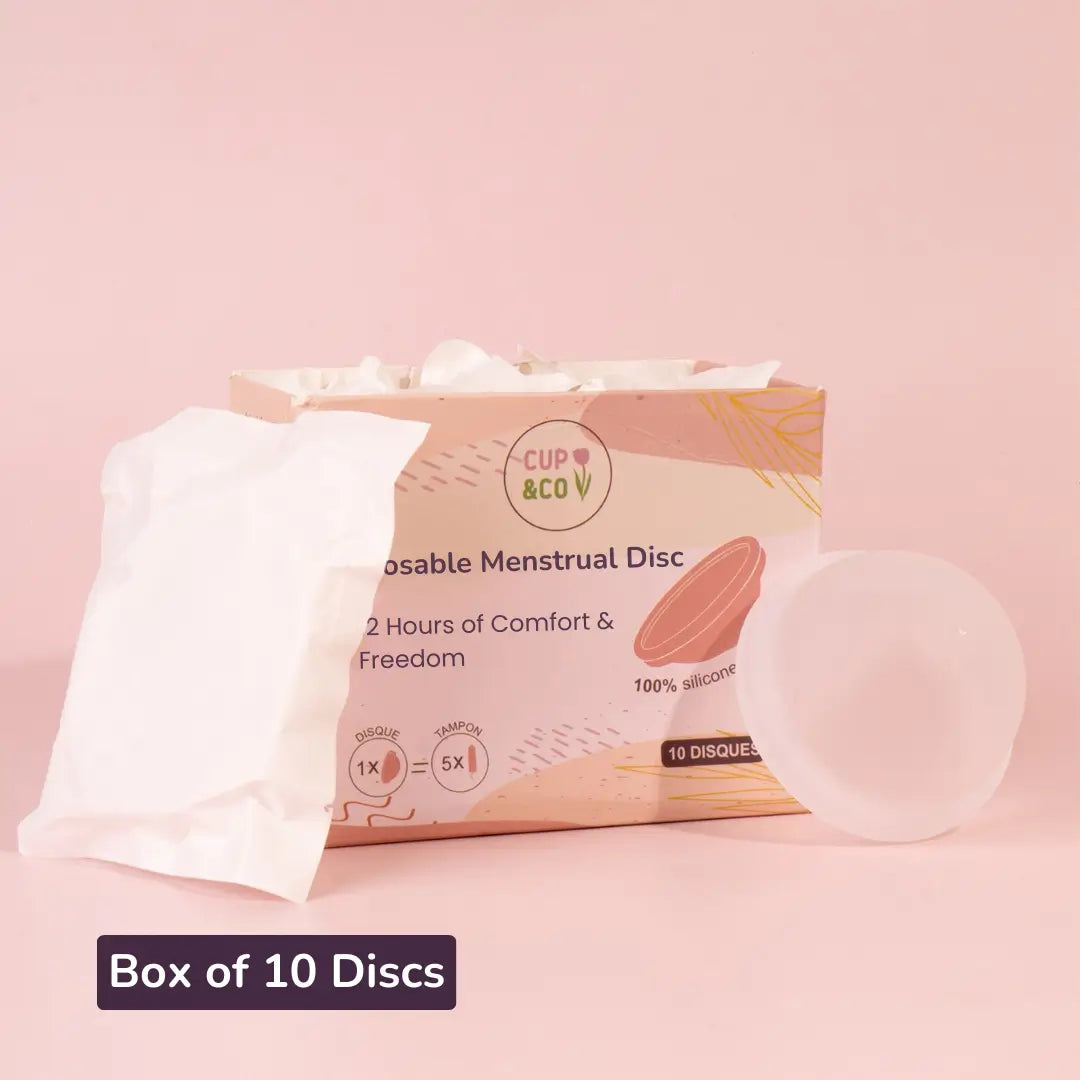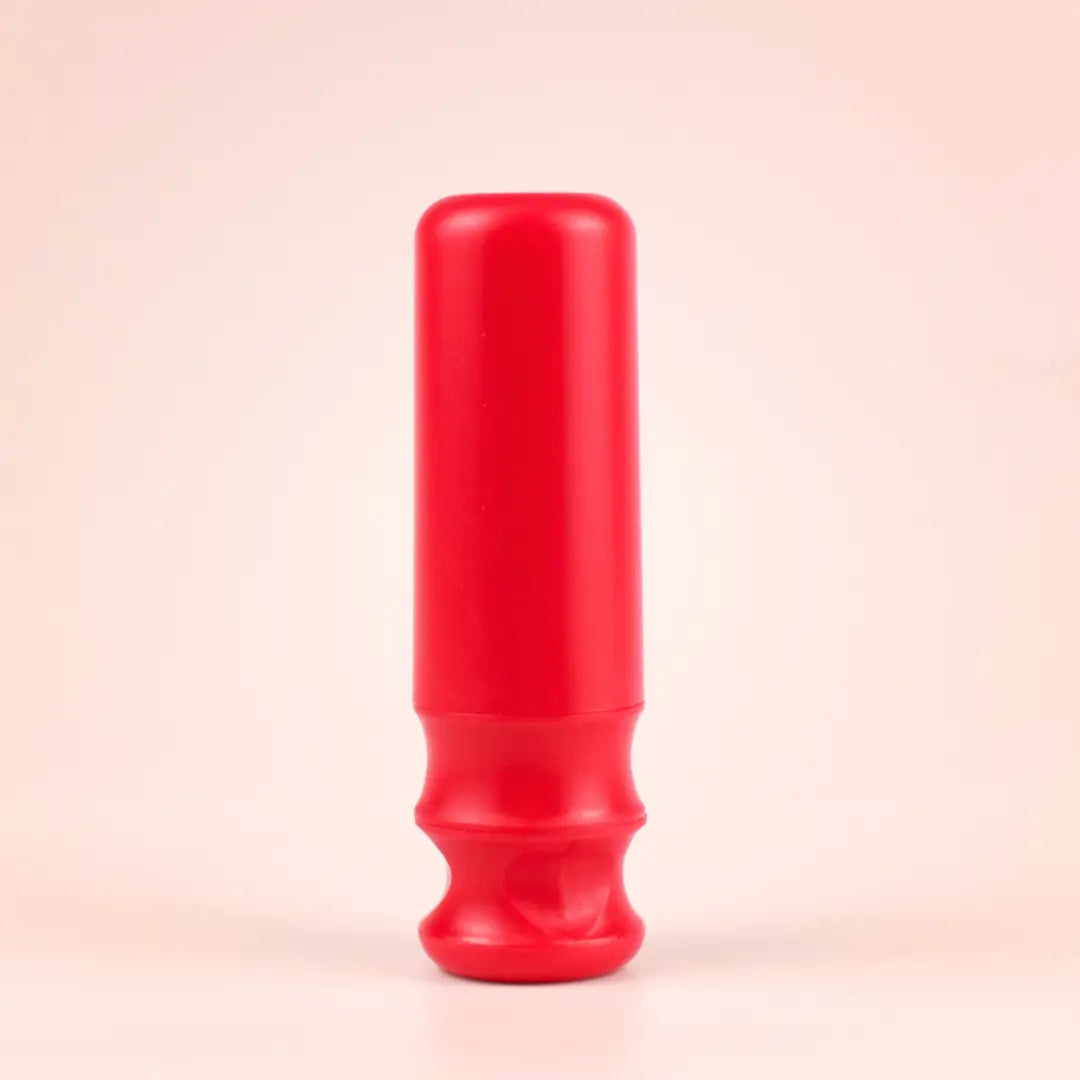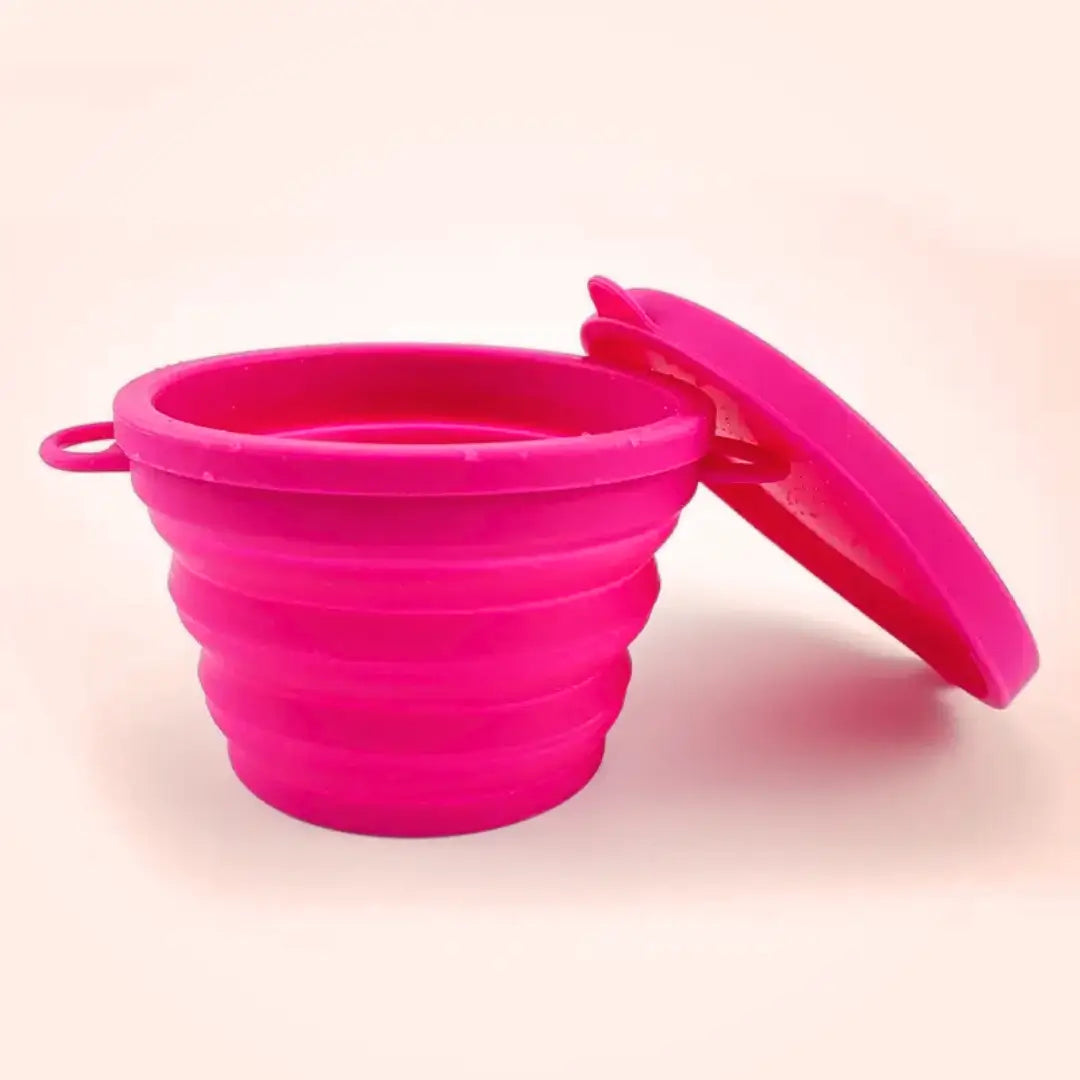Menstrual discs are considered one of the safest internal period products, especially when compared to tampons, which can pose more serious health concerns.
Still, like with any intravaginal protection, it's important to stay aware of a few potential risks:
- Toxic Shock Syndrome (TSS): To reduce your risk, make sure to change your menstrual disc every 6 to 8 hours, even if it's not full.
- Infections from poor hygiene: Most infections come from not washing your hands before insertion or improper cleaning of the disc. Always practice good hygiene before and after use.
- Allergic reactions to materials: Some people may be sensitive to certain materials. To stay on the safe side, choose a disc made from medical-grade silicone like the one from Cup&Co, which is hypoallergenic and body-safe.
🚨 Toxic Shock Syndrome (TSS) the Side Effect of the Menstrual Discs
Although rare, TSS is the most serious danger linked to the use of internal period products like menstrual discs. Here's what you need to know to stay safe.
What is Toxic Shock Syndrome?
TSS is a very rare but potentially life-threatening illness caused by a toxin released by Staphylococcus aureus bacteria. Around 1% of women naturally carry this bacteria, usually without symptoms.
However, when menstrual blood sits too long inside the vagina (especially with internal protection like tampons, discs, cups, or sponges), it can create an environment that allows the bacteria to multiply and release toxins into the bloodstream.
More info on TSS on the official National Institutes of Health (NIH) website.
How to Reduce the Risk of TSS
To lower your chances of developing TSS:
- Empty, rinse, and reinsert your menstrual disc every 6 to 8 hours
- Always wash your hands before and after handling your disc
- Avoid overnight use longer than 12 hours
Even if you carry the bacteria, regular cleaning will prevent toxins from forming.
TSS Symptoms to Watch For
TSS symptoms come on quickly and can escalate fast.
Look out for:
- High fever
- Sudden fatigue or muscle aches
- Nausea or vomiting
- Diarrhea
- Sore throat
- Dizziness or fainting
If you experience these symptoms suddenly, remove your menstrual disc right away and seek emergency medical care 🚑.
You also have a risk of TSS (Toxic Shock Syndrome) when using a menstrual cup.
🦠 Infection Risk with Menstrual Discs
Just like with any internal period product, there's a small risk of introducing bacteria into your vagina during insertion or removal of a menstrual disc. This can lead to infections like yeast infections or bacterial vaginosis.
But don't worry, these risks are easy to avoid with the right hygiene routine 👇
How to Prevent Infections:
- Rinse your disc with water before and after each use
- Sterilize your disc at least once per cycle (boil it or use a sterilizer)
- Always wash your hands before inserting or removing your disc
With these simple steps, you can confidently use your disc without any risk of infection.
👉 Shop the sterilizer designed for menstrual discs.
🤧 Allergy Risks with Menstrual Discs
Some menstrual discs may be made with latex, a material that can cause allergic reactions in certain individuals. However, latex is rarely used in most modern menstrual discs.
To minimize the risk of allergic reactions, it's best to choose a disc made from medical-grade silicone or natural rubber. These materials are generally considered hypoallergenic, meaning they're much less likely to trigger an allergic response.
Are Menstrual Discs More Dangerous Than Tampons and Menstrual Cups?
| ⚠️ Risk/Danger | Menstrual Disc | Menstrual Cup | Tampon |
|---|---|---|---|
| Toxic Shock Syndrome (TSS) | 🟠 Medium Risk | 🟠 Medium Risk | 🔴 High Risk |
| Infections | 🟡 Low Risk | 🟡 Low Risk | 🟠 Medium Risk |
| Allergies | 🟢 Very Low Risk | 🟢 Very Low Risk | 🟡 Low Risk |
| Irritation | 🟢 Very Low Risk | 🟡 Low Risk | 🔴 High Risk |
| IUD Displacement | 🟢 Very Low Risk | 🟠 Medium Risk | 🟡 Low Risk |
| Pain or Discomfort | 🟢 Very Low Risk | 🟡 Low Risk | 🔴 High Risk |
Menstrual discs present a lower risk of Toxic Shock Syndrome compared to tampons. Tampons contain chemicals that can promote toxin growth and sit in direct contact with your vaginal walls, creating a perfect environment for bacteria.
Discs, on the other hand, are chemical-free, and since they hold blood higher in the vaginal canal (near the cervix), there's less direct contact with the vaginal walls, lowering the chance of SCT.
Tampons also tend to cause more irritation by drying out the vaginal tissue and increase infection risk due to the string, which can transfer bacteria from the anus to the vagina.
In terms of allergies, tampons are more likely to trigger a reaction due to added fragrances and bleach. Discs made of medical-grade silicone are far gentler and more biocompatible.
Even compared to menstrual cups, discs are often more comfortable and cause fewer irritations, especially because they don't rely on suction.
Are Cup&Co Menstrual Discs Safe for Your Health?
At Cup&Co, we're committed to offering the highest quality menstrual discs possible. Both our reusable menstrual disc and disposable discs are made from premium medical-grade silicone and manufactured in a facility that specializes in silicone products for the parapharmaceutical sector.
So yes, you can use our menstrual discs with total peace of mind.
And to help you decide for yourself, we offer a 90-day trial period so you can truly see if it's the right fit for you. 💛







